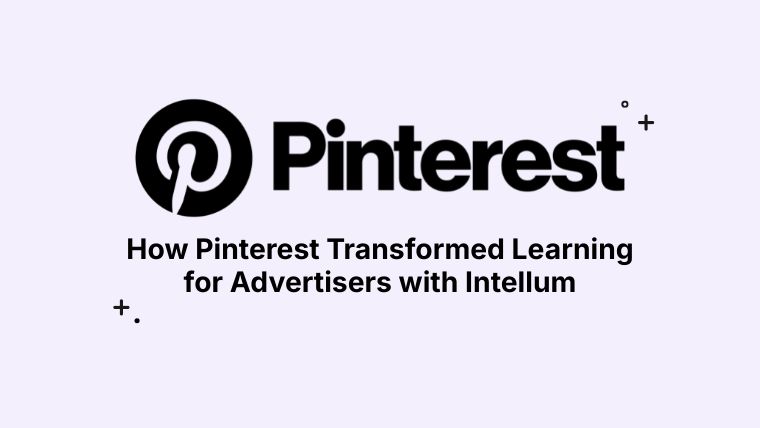We’ve said it once, and we’ll say it again: connecting learning initiatives to measurable business outcomes is essential. Too often, educational programs are developed in isolation, and the impact of the program on business results is an afterthought. But what if we flipped this approach? What if we started with the end in mind, and built education strategies designed to achieve specific business outcomes from the start?
What Is a Business Outcome?
At its core, a business outcome is a measurable result that positively impacts a company’s performance and goals. It’s what keeps the executive team up at night, and therefore the ultimate yardstick for the success of your learning initiatives.
At Intellum, we work with customers across a range of industries, and while the language might vary, we’ve found that most business objectives fall into one of four key categories:
- Revenue Growth – Increasing sales or market share.
- Retention – Enhancing customer or employee loyalty and renewal.
- Performance – Boosting efficiency and productivity.
- Cost Reduction – Cutting expenses or improving efficiency.
Why these four? Because these are the metrics that matter most to leadership. Focusing on too many KPIs can dilute your message and make it difficult to tell a compelling and convincing story about how your program is contributing to one of these goals.
By grouping all relevant metrics under these four categories, you can streamline your reporting and make it easier to communicate the value of your learning initiatives.
Why Focus on Business Outcomes?
Understanding business outcomes isn’t just about impressing leadership—it’s about ensuring the longevity and success of your learning programs. There’s two possible scenarios:
- If you CAN’T tie your work to one of these goals (growth, performance, retention, or cost reduction), then it will be difficult to secure budget, headcount, and resources.
- If you CAN tie your learning initiatives to business goals, then you can justify investment and make informed, data-driven decisions that demonstrate clear ROI.
As you reflect on which scenario is true for you, remember this: even the best-designed learning experiences risk being disconnected from the strategic priorities of the business.
Applying the Framework: Start with the End in Mind
So, how do you take this framework and apply it to your own education programs? It all starts with the end in mind.
1. Identify the business outcomes.
Before creating any learning content, get clear on the business outcomes you want to impact. Are you looking to drive revenue, increase retention, improve performance, or reduce costs? Simply ask yourself (or your executive team): What business outcomes am I trying to impact?
2. Set learning objectives that align with those outcomes.
Once you know the business outcome(s) you’re focused on, create learning objectives that tie directly to those goals. For example, if you want to reduce costs, your learning objectives might focus on upskilling on AI and automation to improve efficiency.
3. Establish key performance indicators (KPIs).
Work with your team to determine which KPIs will indicate you’re on track. It’s helpful to think of these through the lens of leading and lagging metrics. Wondering what those are?
Leading metrics are predictive signals of progress. They track initial actions and behaviors that provide insight into whether your program is moving toward its goals. For education, these might include course completions or engagement rates, which can indicate whether learners are progressing through the content as expected.
Lagging metrics capture the final results of your educational initiatives. They assess the lasting impact of your program and its contribution to overall business objectives. These might include retention rates, customer satisfaction, or revenue growth attributed to the education program.
So, if retention is the focus of your program, your team might decide to track engagement levels, course completions, or customer satisfaction scores as leading indicators that you're making progress toward your goal.
Bringing It All Together
It’s easy to get caught up in the day-to-day of program development, forgetting about the bigger picture. But by taking a top-down approach and starting with business outcomes, you can create learning programs that drive real value for your organization.
So, whether you're designing employee onboarding programs or customer certification courses, remember to begin with the end in mind—and you’ll be well on your way to turning education into measurable business results.




.png)

